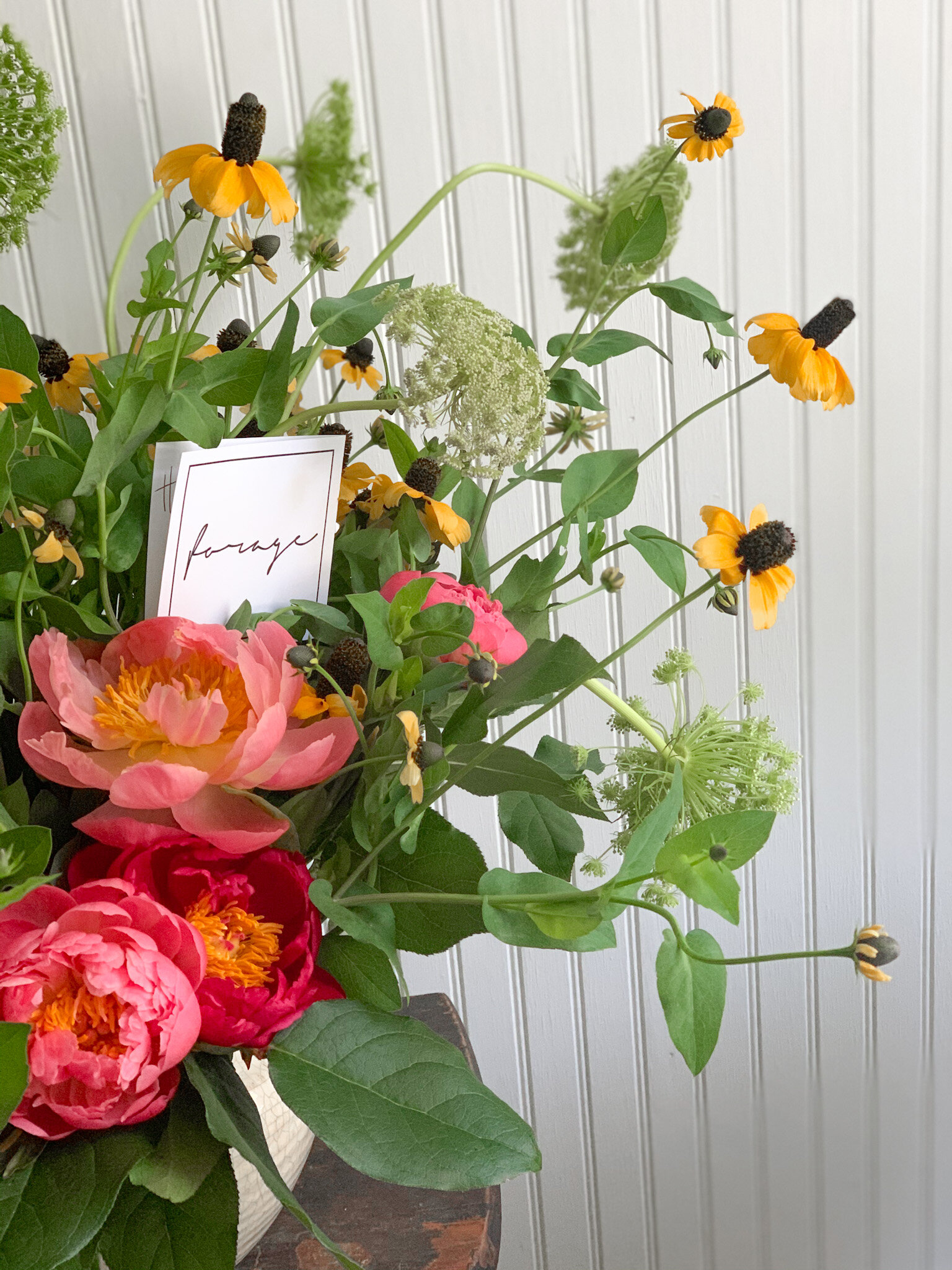Foraging for Flowers and Greenery Through the Seasons
Have you ever been driving down a country road full of ditches in bloom and thought, “Wow, those flowers are so incredible! I wonder if I could use them in an arrangement?”
I’m here to tell you that you can enjoy the beauty in front of you throughout every season as long as you know how to look for it—and how to forage for flowers and greenery throughout the seasons. Here’s how.
Instead of taking you from January to December, let’s start in everyone’s favorite season: spring.
Foraging Spring Flowers
The first signs of spring in the Southeast come from the naturalized daffodils and narcissus. When the very first greens start to pop up, all one can do is hope, wish, cross fingers, toes, and eyelashes that the shockingly lime green blades will send up a bloom.
I’m a notoriously bad landscape maintainer—I commit 100% and then my follow-through is 0%; when the season changes, I go full force with colorful annuals, trimming, big-time lopping, and shearing.
Then it gets hot, cold, too windy, or too muggy, and by halfway through the season, the landscape has overgrown and needs extra love.
When those daffodils start to pop up in the spring, motivation comes in a wave, and I trim everything all at once.
This is my first tip for foraging through the seasons: look at what is right in front of you. The hydrangea blooms that dried on the plant? Clean them up and save those blooms. Your hydrangea bush will thank you in the following season with an abundance of new growth.
When a late freeze snaps your favorite outdoor plant, take advantage and clip from it. By intertwining these (some would say dead) dried elements and blooms from the very first spring flowers, you’ll be painting a picture with your arranged flowers of what is going on in the landscape at the same time.
Foraging Summer Flowers
When summer hits down South, every ditch in eyesight is filled with coreopsis and rudbeckia. Cut these early in the morning before the summer heat hits, and place them in fresh cool water. Be careful not to damage the roots so that these plants can continue to send up new blooms.
When foraging with summer flowers, try using a few non-foraged big impact blooms and see how it transforms your arrangement. In June, mixing peonies with the readily available Black-Eyed Susan [image below] makes it feel like these were picked from a field in full bloom.
Foraging Flowers and Greenery in Autumn
Fall brings on cooler weather, and the wedding calendar fills up. When foraging for fall events, think about looking for product that is drying or dried. One of my favorite ways to do this is very simple: Drive through neighborhoods before debris pick-up day.
Sycamore leaves dry beautifully and occasionally keep their fruits on the stem. This adds interest and a hint of autumn to any arrangement, and the color cannot be beat. Persimmons contrast the muted colors of the sycamore with bright, vibrant fruits and stand out in their orange glory.
Foraging Greenery in Winter
Winter is unpredictable in many ways. One thing is sure, though: There is much to forage! Evergreens can be clipped from your yard or bought in the grocery store in bundles, but let me share a trick that I rely on every year.
Nurseries that sell Christmas trees keep a box of clippings from trimming the bottoms of the trees to stand upright. This box is a gold mine of beautiful foliage.
Gather from this crate and think about pulling clippings from different varieties of trees: firs, spruce, pine, and if you’re extra lucky, maybe you will find a sprig or two of blue spruce. Mix these greens with others that you can forage from your landscape—boxwood is always a favorite—and create a beautiful foraged wreath.
I hope that this has opened your eyes to not only the beauty in foraging, but also some of the unusual places to forage that are right in front of you!
Remember when foraging that you don’t want to damage plants, roots, or property, and a general rule is that if you don’t know what it is, you probably shouldn’t touch it!
Check out the US Wild Flowers website to help identify wildflowers. Team Flower also has resources on foraging tips that can be found here.











